- Qualcomm Launches Snapdragon 4 Gen 2 Mobile Platform
- AMD Launches Ryzen PRO 7000 Series Mobile & Desktop Platform
- Intel Launches Sleek Single-Slot Arc Pro A60 Workstation Graphics Card
- NVIDIA Announces Latest Ada Lovelace Additions: GeForce RTX 4060 Ti & RTX 4060
- Maxon Redshift With AMD Radeon GPU Rendering Support Now Available
Battle of the 16-cores: Intel’s Core i9-7960X vs. AMD’s Threadripper 1950X
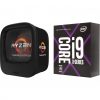
It still feels a little hard to believe, but both AMD and Intel offer the enthusiast market their own take on a 16-core chip. Remember when quad-cores seemed overkill for desktops? At the top-end, the CPU you choose can greatly affect your workload for better or for worse. So, let’s see what these beefy chips are made of.
Page 3 – Rendering: (3ds Max 2015 & 2018), Blender, Cinebench, POV-Ray & V-Ray
(All of our tests are explained in detail on page 2.)
Design and rendering is one of the greatest areas of computing to benchmark to highlight the benefits of faster hardware, whether it be a CPU, GPU, memory, and even storage. On a low-end system, a production render might take hours, for example, whereas on a high-end system, that render could be shaved down to the tens of minutes.
With these results, it’s up to you to gauge where the best value can be found. In some cases, it might be beneficial to go with more modest hardware if the time-to-render isn’t of a great concern; in other cases, spending more on faster hardware might actually save you money in the long-run.
For our rendering tests, we use Autodesk’s 3ds Max (2015, for SPECapc, and 2018, for our real-world model render), the popular open source design suite Blender, as well as Cinebench, POV-Ray, and V-Ray Benchmark for some quick-and-dirty results.
Autodesk 3ds Max 2015 & 2018
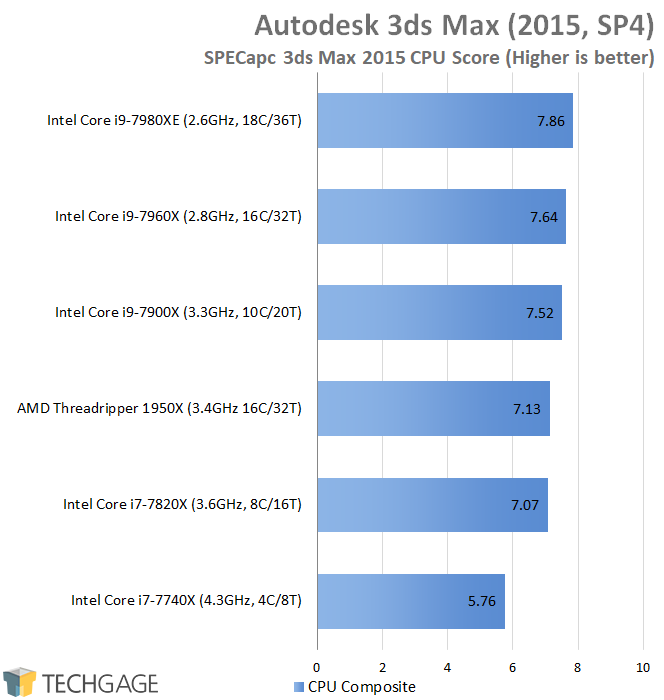
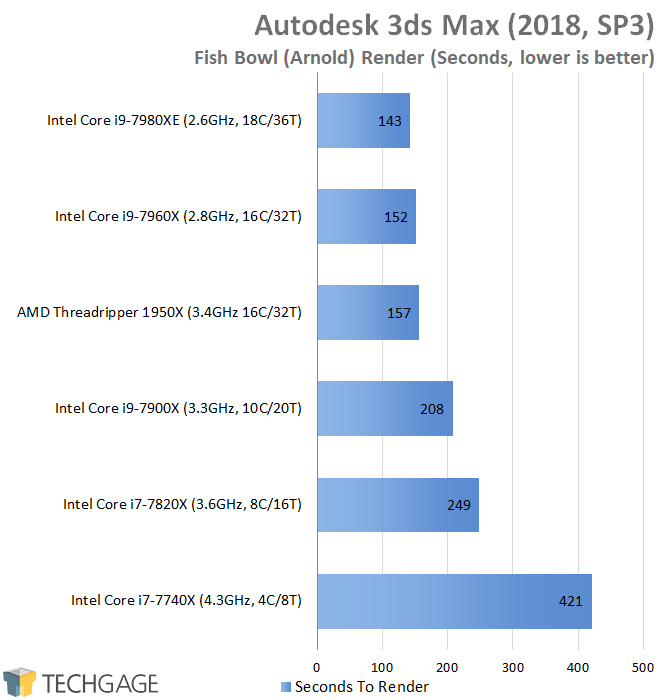
Both sets of results are saying similar things here, but Intel enjoyed stronger performance in SPEC’s test, with the i9-7900X placing ahead of AMD’s 1950X. With the real-world render, Threadripper came within striking distance of the 7960X. AMD doesn’t mention Autodesk too often when it comes to performance, not even in relation to its professional GPU lines, but where Threadripper is concerned, it’s no slouch.
Blender
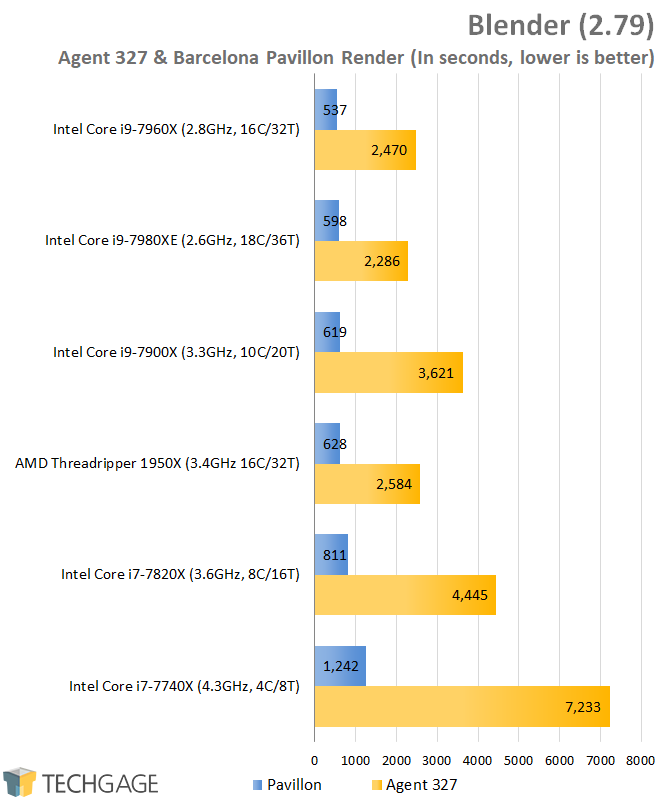
Results like these highlight the fact that not all projects are built alike. The 16-core Intel chip somehow outperformed the 18-core with the Pavillon render, but it scaled as expected with the more time-intensive Agent 327 (both projects can be downloaded for free here.) In the given match-up of 16-core vs. 16-core, Intel’s clearly winning the fight. But don’t worry – AMD has some tricks up its sleeves.
Synthetic Renderers: Cinebench, POV-Ray, V-Ray
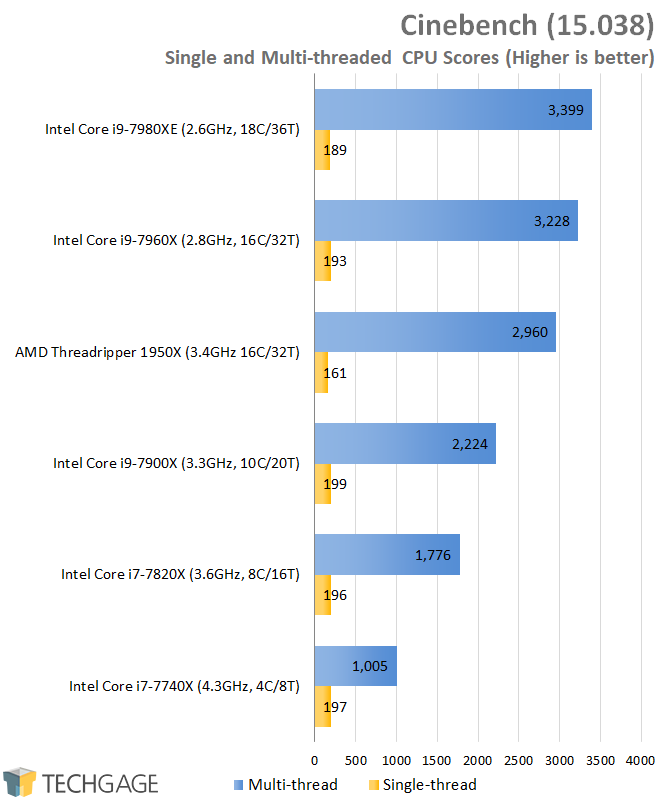
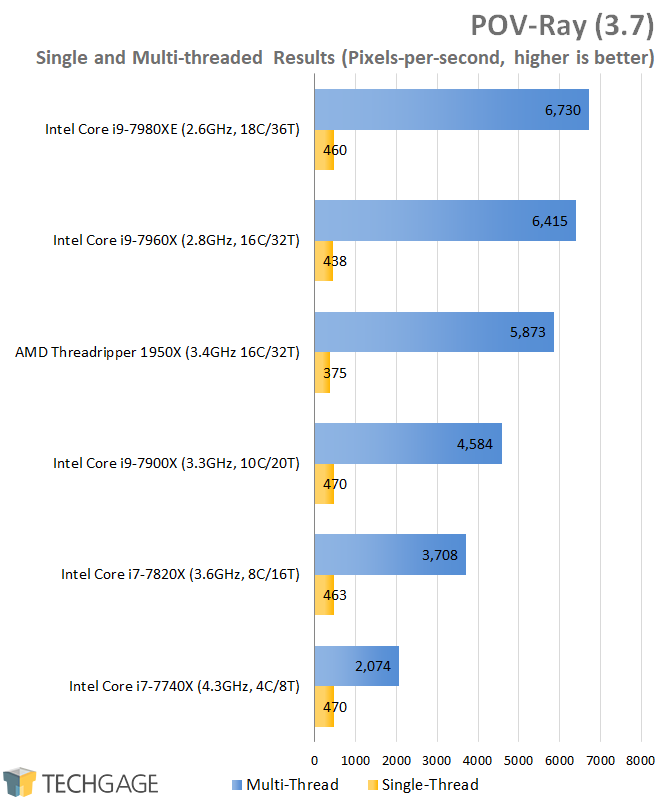
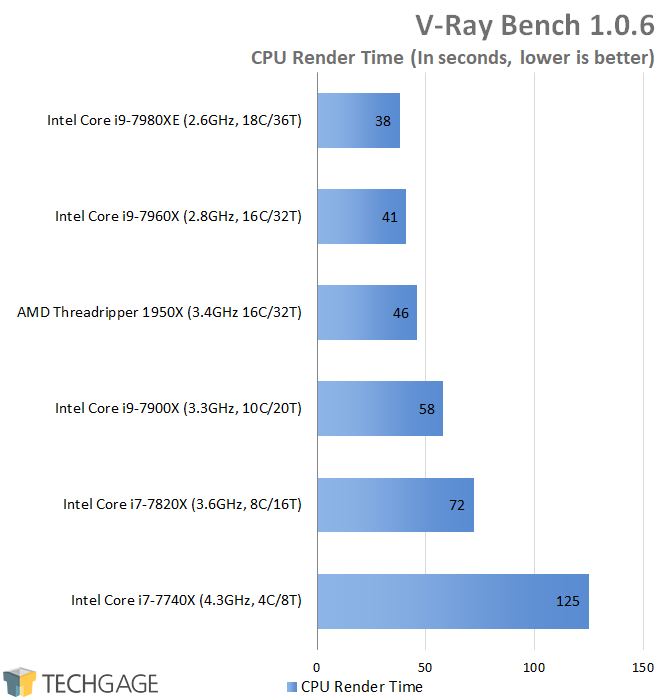
Synthetic tests are not entirely representative of the real-world in all cases, but when we need reliable, repeatable numbers, they can truly prove useful. That’s especially true when they don’t really seem to favor one architecture over another; AMD’s scaling here is to be expected from its slightly weaker IPC performance. Meanwhile, the 7980XE offers modest gains over the 7960X, as its 12.5% increase in cores would suggest.
Support our efforts! With ad revenue at an all-time low for written websites, we're relying more than ever on reader support to help us continue putting so much effort into this type of content. You can support us by becoming a Patron, or by using our Amazon shopping affiliate links listed through our articles. Thanks for your support!





